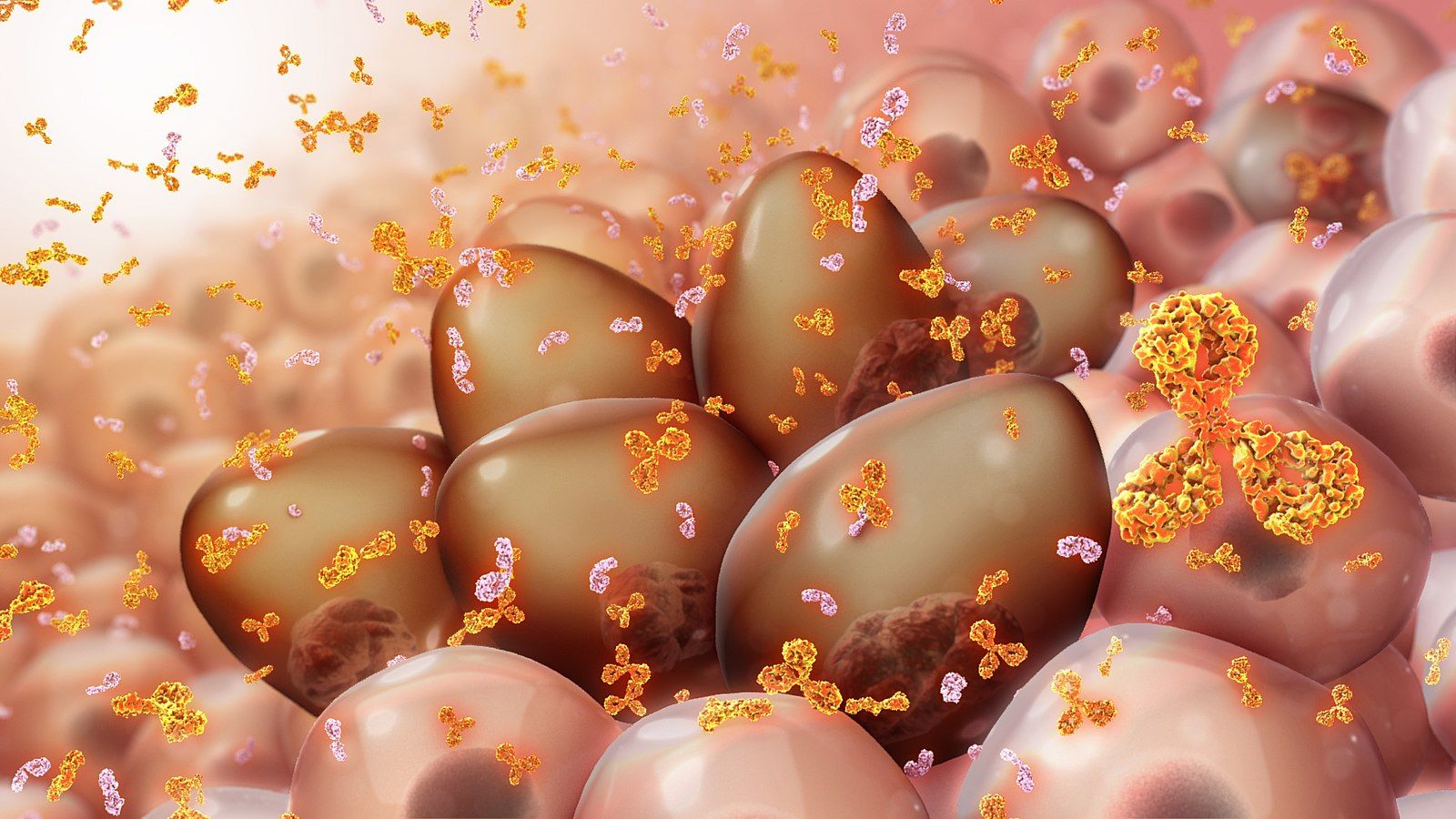Daratumumab/CVRd Yields PFS Benefit in Ultra-High-Risk Multiple Myeloma
Data appear to support a tailored treatment approach with induction and post–autologous stem cell transplant consolidation daratumumab and CVRd in those with ultra-high–risk multiple myeloma.
“Our aim is to find the best initial treatment for people with ultra-high–risk myeloma, to hopefully improve their outcomes,” lead study author Martin Kaiser, MD, team leader in Myeloma Molecular Therapy at The Institute of Cancer Research, London, and consultant hematologist at The Royal Marsden NHS Foundation Trust, said in a press release on results from the OPTIMUM trial.

Treatment with agents including daratumumab (Darzalex) plus cyclophosphamide, lenalidomide (Revlimid), bortezomib (Velcade), and dexamethasone (CVRd) as induction therapy and consolidation therapy following autologous stem cell transplantation (ASCT) benefitted progression-free survival (PFS) for patients with ultra-high–risk multiple myeloma, according to findings from the phase 2 OPTIMUM trial.1
The 18-month PFS rate was 81.7% among patients receiving treatment in the OPTIMUM trial with a determinable PFS status (n = 103). In a comparator arm that included patients who received lenalidomide plus dexamethasone and cyclophosphamide with or without carfilzomib (Kyprolis) in the phase 3 Myeloma XI (MyeXi) trial (NCT01554852), the 18-month PFS rate was 65.9%. Investigators reported a 99.5% probability of 18-month PFS rate being higher for those receiving the OPTIMUM regimen vs those receiving the MyeXI combination, which surpassed the prespecified 85% threshold for a meaningful outcome improvement.
The estimated 30-month PFS rates were 77.0% (95% CI, 68.8%-85.1%) for patients in the OPTIMUM trial and 39.8% (95% IC, 30.7%-48.9%) for those in the MyeXi trial. Additionally, the estimated 30-month overall survival (OS) rates were 83.5% (95% CI, 76.4%-90.7%) vs 73.5% (95% CI, 65.5%-81.5%) in each respective trial population.
“Our aim is to find the best initial treatment for people with ultra-high–risk myeloma, to hopefully improve their outcomes,” lead study author Martin Kaiser, MD, team leader in Myeloma Molecular Therapy at The Institute of Cancer Research, London, and consultant hematologist at The Royal Marsden NHS Foundation Trust, said in a press release on results from the OPTIMUM trial.2 “We have shown that a more tailored approach involving 5 different drugs could help treat patients with the highest-risk forms of myeloma—helping keep them alive and healthy for longer.”
In the multi-center phase 2 OPTIMUM trial, patients received a maximum of 2 cycles of bridging therapy with standard of care followed by induction with daratumumab plus CVRd before ASCT. Consolidation therapy consisted of daratumumab plus lenalidomide, bortezomib and dexamethasone for 6 cycles followed by daratumumab plus lenalidomide and bortezomib for 12 cycles and then maintenance with daratumumab plus lenalidomide until disease progression.
The primary end point was PFS at 18 months, and the primary end points for the futility analysis were minimal residual disease (MRD) and PFS at 100 days after ASCT. Secondary end points included PFS as a time-to-event measure, safety and tolerability, maximum response per International Myeloma Working Group criteria, treatment compliance, and OS.
Patients with suspected or confirmed symptomatic newly diagnosed multiple myeloma or plasma cell leukemia deemed fit to receive intensive therapy were eligible to enroll on the OPTIMUM trial. Investigators identified ultra-high–risk disease based on central trial genetics with the use of multiplex ligation-dependent probe amplification and quantitative reverse transcriptase polymerase chain reaction assays.
Overall, 107 patients met eligibility requirements for the OPTIMUM trial, and 120 patients in the MyeXi trial comprised the comparator arm. The median age was 60 years (range, 35-78) in the OPTIMUM population and 62 years (range, 33-69) in the MyeXi population, and most patients in each respective group were male (59.8% vs 57.5%). Additionally, most patients in each respective group had International Staging System stage II disease (40.2% vs 44.2%), an ECOG performance status of 0 (47.7% vs 39.2%), a double genetic hit (53.3% vs 64.2%), and a present SKY92 gene expression profile (76.6% vs 59.2%).
All patients in the OPTIMUM population received a minimum of 1 dose of trial treatment. Additionally, 92 patients underwent ASCT, 85 received the first part of consolidation treatment at 100 to 120 days after ASCT, and 80 received the second part of consolidation treatment.
After completion of the first portion consolidation therapy, the complete response (CR) rate was 68.2%, the very good partial response (VGPR) rate was 22.4%, and the PR rate was 4.7%. Of 68 patients with MRD-negative disease at day 100, 63.2% achieved a CR at day 100, and 91.2% experienced a CR at the conclusion of first consolidation therapy. Moreover, 84.0% of patients with MRD-negative disease at 100 to 120 days following ASCT were still MRD-negative by the time the second consolidation therapy portion ended.
The most common hematologic grade 3/4 adverse effects (AEs) observed during intensified consolidation included thrombocytopenia (22.5%) and neutropenia (40.0%), and the most common non-hematologic AE was infection (12.5%).
Overall, 92.5% of patients finished preplanned induction therapy, and 4.7% stopped treatment before finishing 1 cycle. Of 85 patients who initiated the first portion of consolidation therapy, 92.9% received 6 cycles of therapy. Daratumumab, bortezomib, and lenalidomide were administered to patients without dose reductions in 98.8%, 69.0%, and 57.5% of patients, respectively.
“As a next generation ‘digital comparator’ trial, the OPTIMUM trial also sets a new standard for fast-tracking evidence. It is a successful proof of principle study which could help inform and speed up future studies,” Kaiser concluded.
References
- Kaiser MF, Hall A, Walker K, et al. Daratumumab, cyclophosphamide, bortezomib, lenalidomide, and dexamethasone as induction and extended consolidation improves outcome in ultra-high-risk multiple myeloma. J Clin Oncol. Published online June 14, 2023. doi:10.1200/JCO.22.02567
- Next-generation trial shows five-drug combo can keep ‘ultra-high-risk’ bone marrow cancer at bay. News release. The Institute of Cancer Research. June 23, 2023. Accessed June 26, 2023. https://shorturl.at/filKO
Navigating AE Management for Cellular Therapy Across Hematologic Cancers
A panel of clinical pharmacists discussed strategies for mitigating toxicities across different multiple myeloma, lymphoma, and leukemia populations.